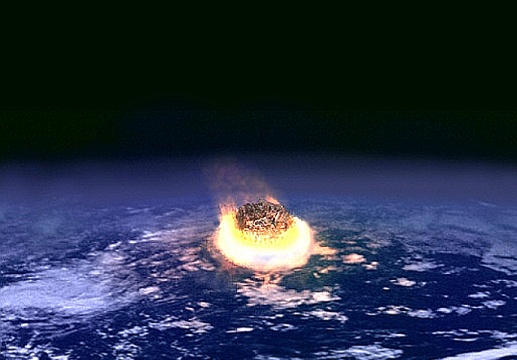- Series:Astronomy, Transcript English
Psalm 19:1
“The heavens declare the glory of God; and the firmament shows His handiwork.”
Two rocks float through silent space, unaware that they will soon cause a scientific debate millions of miles away on Earth. On Earth, these two small asteroids added together may weigh only a few hundred pounds. However, the conclusions that can be drawn from them might be weighty enough to overthrow a powerful theory.
 That summarizes the status of a scientific debate over patterns in which meteorites fall. Evolutionary theory says that when those two asteroids smash together in space, the resulting chunks will separate during the millions of years before they ever strike Earth. As a result, meteor falls cannot possibly follow a pattern. However, a pattern has now been discovered.
That summarizes the status of a scientific debate over patterns in which meteorites fall. Evolutionary theory says that when those two asteroids smash together in space, the resulting chunks will separate during the millions of years before they ever strike Earth. As a result, meteor falls cannot possibly follow a pattern. However, a pattern has now been discovered.
Researchers from Purdue University and the State University of New York say they have discovered that 17 meteorites that struck the Earth in May between 1855 and 1895 form a broad line that extends for several thousand kilometers. Because the Earth revolves, however, the line is mathematical rather than geographical. The meteorites are classified as H chondrites. When scientists analyzed 13 of the stones, they found that each had similar amounts of rare trace elements not found in 45 other H chondrite meteorites. The other meteorites did not fall into the geographic line researchers had discovered.
The findings strongly suggest that these stones had not been drifting through space long enough to separate before they hit the Earth. If the solar system is billions of years old, there is virtually no chance of the stones remaining together, which suggests a young age for the solar system.
Prayer:
Lord, the many wonders in the heavens do more than inspire our awe. They also bear testimony to the truth of Your Holy Word, what You have made, and our need to be restored to our Creator by grace through faith in Your innocent suffering and death for us on the cross. Amen.
Notes:
Cowen, R. 1992. “Meteorites: to stream or not to stream?” Science News, v. 142, Aug. 1, p. 71.
